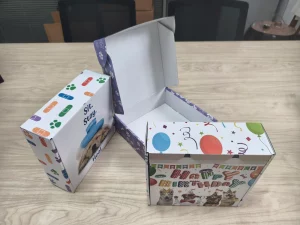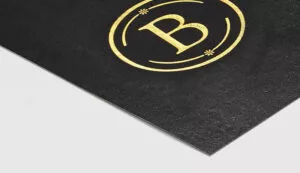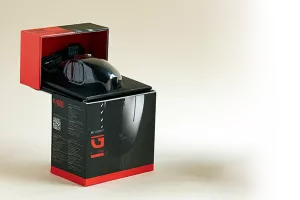Embracing Eco-Friendly Packaging: Sustainable Solutions for Reducing Environmental Impact
As someone passionate about protecting our planet, I’ve seen how important eco-friendly packaging is for a healthier environment. Sustainable packaging helps reduce waste and pollution, making our world a better place. In this article, we’ll explore different types of eco-friendly packaging options, understand their benefits, and learn how both businesses and individuals can make the switch to sustainable solutions. Let’s dive in and discover how we can all contribute to a greener future through smarter packaging choices.
Table of Contents
What Is Eco-Friendly Packaging and Why Is It Important?
Eco-friendly packaging refers to packaging solutions that are kind to the environment. This type of packaging is made from sustainable materials that are biodegradable, recyclable, or compostable. By using packaging made from recycled materials or materials that break down naturally, we can significantly reduce the environmental impact of our waste.Why is this important? Traditional packaging often ends up in landfills, where it can take hundreds of years to decompose. This not only fills up landfills but also harms wildlife and contributes to pollution. Sustainable packaging helps combat these issues by reducing waste and conserving resources. It’s a sustainable packaging solution that benefits everyone.

There are many types of eco-friendly packaging materials available today. Here are some common ones:
- Biodegradable packaging: Materials that decompose naturally, like certain plastics made from plant sources.
- Recyclable packaging: Packaging made from materials like paper, cardboard, and some plastics that can be recycled into new products.
- Compostable packaging: Similar to biodegradable materials but designed to break down in compost settings, turning into nutrient-rich soil.
Using these materials, businesses can create product packaging that doesn’t harm the environment. For example, kraft packaging is made from recycled paper and is both sturdy and recyclable. Paper packaging is another great option that’s easy to recycle.
How Does Sustainable Packaging Reduce Environmental Impact?
Sustainable packaging reduces environmental impact in several ways:
- Less Waste: By using materials that are recyclable or biodegradable, we reduce the amount of waste that goes to landfills.
- Resource Conservation: Packaging made from recycled materials uses fewer natural resources than new materials.
- Lower Carbon Emissions: Manufacturing with recycled or sustainable materials often produces fewer carbon emissions, helping combat climate change.
By implementing eco-friendly packaging solutions, businesses and consumers alike can make a positive difference. It’s a simple change with a big impact.
The Benefits of Using Recyclable and Biodegradable Packaging
Choosing recyclable and biodegradable packaging has many benefits:
- Environmental Protection: Reduces pollution and conserves resources.
- Consumer Appeal: Many customers prefer products with environmentally friendly packaging.
- Brand Image: Shows that a company cares about sustainability and the planet.
For example, using packaging made from recycled materials not only looks good but also tells customers that you’re committed to sustainability. It’s a win-win situation for businesses and the environment.
How to Implement Eco-Friendly Packaging Solutions in Your Business
From my experience helping businesses transition to sustainable practices, I know it might seem challenging, but it’s easier than you think. Here’s how to start:
- Assess Your Current Packaging: Look at what you’re using now and identify areas for improvement.
- Choose Sustainable Materials: Switch to eco-friendly packaging materials like kraft paper, recyclable plastics, or biodegradable options.
- Partner with Suppliers: Work with companies that specialize in sustainable packaging solutions. For example, our Cardboard Boxes are made from recycled materials and are perfect for businesses looking to reduce their environmental impact.
By making these changes, small businesses can not only help the planet but also attract customers who value sustainability.

Exploring Compostable Packaging Options
Compostable packaging is designed to break down in composting conditions, leaving no harmful residues. This is especially useful for food packaging and other items that often end up as waste.Some compostable packaging solutions include:
- Plant-based plastics: Made from materials like cornstarch.
- Bamboo packaging: A fast-growing, renewable resource.
- Bagasse: Made from sugarcane fibers.
Using compostable packaging reduces the environmental impact of your products. If you’re interested, check out our Kraft Paper Bags, which are a great eco-friendly option.
Reusing and Recycling: Making the Most of Recycled Materials
Reuse and recycle are key components of sustainability. By encouraging customers to reuse packaging or making sure it’s recyclable, we extend the life of the materials.Here are some ways to promote reuse and recycling:
- Provide Reusable Packaging: Offer packaging that customers can use again, like sturdy bags or boxes.
- Use Recycled Materials: Create packaging made from recycled materials to reduce resource consumption.
- Educate Customers: Let them know how to recycle or reuse your packaging.
Our Customized Packaging Boxes are not only customizable but also made with sustainability in mind.
The Role of Kraft and Paper Packaging in Sustainability
Kraft packaging and paper packaging are excellent examples of sustainable materials:
- Biodegradable: Both materials break down naturally over time.
- Recyclable: Easy to recycle and turn into new products.
- Made from Recycled Materials: Many kraft and paper products are already made from recycled materials.
Using kraft packaging shows a commitment to the environment. For instance, our Kraft Paper Bags are a popular choice for businesses aiming for eco-friendly packaging solutions.

Sustainable Packaging Solutions for Food and Shipping Industries
Industries like food and shipping can greatly benefit from sustainable packaging:
- Food Packaging: Using biodegradable packaging ensures that any waste breaks down safely.
- Shipping Packaging: Choosing recyclable or reusable materials reduces waste. Our Corrugated Boxes are perfect for shipping solutions that are kind to the earth.
Implementing eco-friendly packaging in these industries not only helps the environment but also meets the growing consumer demand for sustainable solutions.
How Small Businesses Can Transition to Environmentally-Friendly Packaging
For small businesses, moving to environmentally friendly packaging might seem tough, but it’s quite achievable:
- Start Small: You don’t have to change everything at once. Begin with one product or packaging type.
- Choose the Right Materials: Look for eco-friendly packaging options that suit your needs.
- Educate Yourself and Your Customers: Understand the benefits and share this knowledge.
We offer a range of Customized Packaging Boxes designed to help small businesses make the switch seamlessly.
FAQs
What is eco-friendly packaging?
Eco-friendly packaging refers to packaging solutions that are sustainable, recyclable, biodegradable, or made from recycled materials. These options help reduce the environmental impact of packaging waste.
Why should businesses use sustainable packaging?
Using sustainable packaging helps reduce waste, conserves resources, and can improve a business’s image. Customers are increasingly looking for eco-friendly product packaging, so it can also boost sales.
What are some types of eco-friendly packaging materials?
Materials include kraft packaging, paper packaging, biodegradable plastics, and packaging made from recycled materials. These materials are better for the environment than traditional packaging.
How can small businesses implement eco-friendly packaging?
Start by evaluating your current packaging and identifying sustainable alternatives. Partner with suppliers that offer sustainable packaging solutions and educate your customers about the benefits.
What is the difference between biodegradable and compostable packaging?
Biodegradable packaging breaks down naturally over time, while compostable packaging breaks down in specific composting conditions and turns into nutrient-rich soil.
Key Takeaways
- Eco-friendly packaging helps reduce waste and protect the environment.
- Using sustainable packaging can improve brand image and meet customer expectations.
- There are many options, including recyclable, biodegradable, and compostable packaging.
- Small businesses can make a big impact by switching to environmentally friendly packaging.
- Partnering with the right suppliers makes the transition easier.
By choosing eco-friendly packaging, we can all contribute to a healthier planet. Let’s work together to make sustainable choices that benefit everyone.








